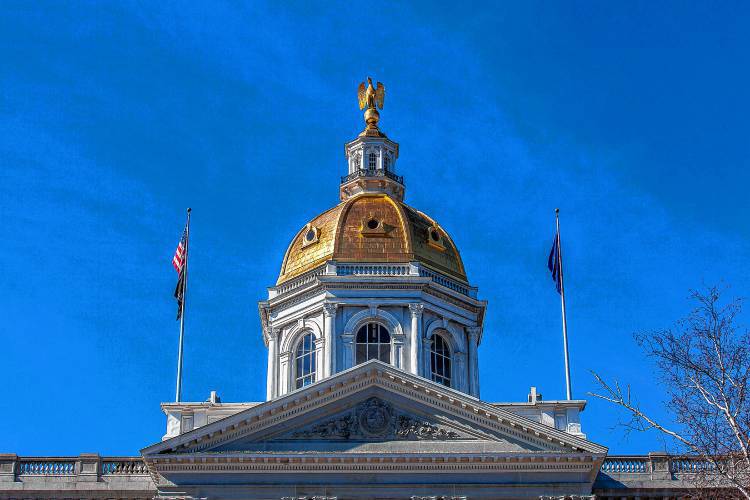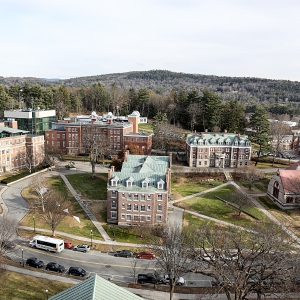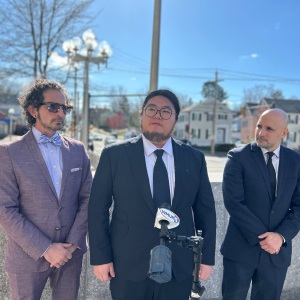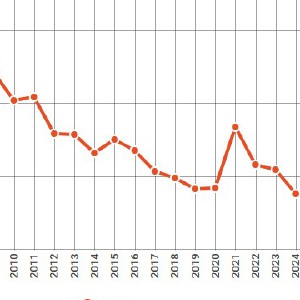What to know about the plan to allow students to attend any public school in the state

The State House dome as seen on March 5, 2016. (ELIZABETH FRANTZ / Monitor staff) ELIZABETH FRANTZ—ELIZABETH FRANTZ / Monitor staff
| Published: 04-11-2025 1:59 PM |
Starting next year, New Hampshire may allow all students to attend any public school in the state that has space for them.
That change, which is referred to as “open enrollment,” was approved by the House of Representatives on Thursday as part of the state budget bill. Currently, school districts in the state may choose to allow students to enroll elsewhere, but they don’t have to do so. The proposed law would require that every school district allow their students to explore other public school options – and pay for them.
Critics of the proposal, which was passed as a standalone bill by the House last month, warn it could upend enrollment patterns, having a calamitous effect on low-performing and small school districts.
Proponents argue that it will spur competition among school districts, ultimately lifting performance across the board.
In a legislative cycle full of major education bills, including a proposed expansion to the state’s school voucher program and a proposed statewide school budget cap, the open enrollment plan has largely flown under the radar. However, it has the potential to significantly alter the public education landscape across the state, starting as soon as 2026.
Here are some answers to questions about open enrollment:
How would open enrollment even work?
The bill, HB 741, would require that every school district publicly post and update a monthly list of open seats in each of its schools and grade levels. Parents of children who live anywhere in the state would then be able to apply wherever openings exist.
Article continues after...
Yesterday's Most Read Articles
 Hopkinton structure fire spreads to surrounding brush and fields
Hopkinton structure fire spreads to surrounding brush and fields
 ACLU asks New Hampshire federal judge to reinstate student status for more than 100 international students
ACLU asks New Hampshire federal judge to reinstate student status for more than 100 international students
 Concord man arrested after middle schooler drug exposure
Concord man arrested after middle schooler drug exposure
 ‘Frivolous and lacking merit’: Complaint against golf committee members over clubhouse vote dismissed
‘Frivolous and lacking merit’: Complaint against golf committee members over clubhouse vote dismissed
 ‘A bit Kafkaesque’: Federal judge spars with government lawyer over status of Dartmouth international student
‘A bit Kafkaesque’: Federal judge spars with government lawyer over status of Dartmouth international student
 Granite Geek: A contrary Earth Day thought – we shouldn’t pick up litter
Granite Geek: A contrary Earth Day thought – we shouldn’t pick up litter
If more students apply than a school has capacity to accommodate, the school would be expected to select them by lottery, according to Rep. Glenn Cordelli, the prime sponsor of the bill. Children whose parents serve in the military would receive priority.
Children would also be permitted to switch schools throughout the year as space opens.
Who would pay for students who enroll in schools outside of their home district?
The school district where the student resides would be responsible for paying the district the student attends 80% of the home district’s average cost per pupil.
Will either district have to cover students’ transportation to school?
No, except the district the student attends would be responsible for transporting the student if he or she arrives at an existing bus stop in the district on his or her own.
Is this something that other states do?
Yes, 16 other states currently have statewide open enrollment laws, according to the libertarian-leaning think tank the Reason Foundation.
These states are primarily Republican-controlled but also include purple and Democrat-leaning states like Colorado and Wisconsin.
How have open enrollment policies played out elsewhere?
In Arizona, Florida and Wisconsin, the three states studied by the Reason Foundation, between 9% and 11% of students availed themselves of open enrollment, though in Florida, the vast majority of those students transferred to other schools within their districts rather than outside of them.
Cordelli estimated in an interview this week that “80-90% always will be going to their local public school.” If a district were to lose 10% to 20% of its students without receiving students from other districts, this would lead to a budget impact of between 8% and 16%.
Reason found that students primarily transfer from school districts with low test scores to districts with higher ones. Limited research shows no evidence that increased competition improves test scores in the districts that lose the most students – and, as a consequence, have to pay the most money.
How does this proposal fit into the broader debate on school choice?
Cordelli said criticism of the state’s education freedom account program motivated him to bring the open enrollment proposal to the House.
“I've been very involved with the Education Freedom Account program and I've heard people criticizing that program saying that public funds should stay with public schools,” Cordelli said. “And this is really the answer to that criticism.”
For opponents of school choice programs, however, this has not been a satisfactory answer. Opponents argue that allowing students to flee low-performing schools without addressing the state funding model that leads to poor performance will foster increased inequality in the state.
“Allowing parents with the means to transport their children to send them to school in other districts only exacerbates the gaps between wealthy and poor in our school districts,” Benjamin Stinson of Concord wrote in online testimony for the bill. “People should be invested in the areas in which they live, not siphoning off resources to the schools in our state that are already doing well.”
What do school leaders have to say about the bill?
Leaders have several logistical and financial concerns. First, school districts begin preparing their budgets about a year before the start of the school year. They say it will be a challenge to produce accurate financial forecasts in the face of major unknowns surrounding enrollment, revenue and expenditures.
“An open enrollment law that takes effect on January 1, 2026 could result in shifting enrollments that districts did not plan or budget for in their 2025 - 2026 projections,” wrote Mark MacLean, the executive director of the School Administrators Association, in online testimony for the bill.
Not all school leaders are opposed, however.
“Public school choice introduces an element of competition that encourages all our public schools to meet more families' needs,” said Timothy Broadrick, the superintendent of three school administrative units in the Lakes Region. “I do not fear a day when schools compete on our merits for family choice.”
Jeremy Margolis can be contacted at jmargolis@cmonitor.com.







 New Hampshire births fell to a modern low in 2024
New Hampshire births fell to a modern low in 2024 ‘New Hampshire is just going to embarrass itself’: Former Child Advocate warns against proposed office cuts
‘New Hampshire is just going to embarrass itself’: Former Child Advocate warns against proposed office cuts Bow recognizes two DPW workers who rescued driver of overturned propane truck
Bow recognizes two DPW workers who rescued driver of overturned propane truck ‘A large chunk of change’: Feathered Friend Brewing disputes tariff on Canadian import
‘A large chunk of change’: Feathered Friend Brewing disputes tariff on Canadian import
